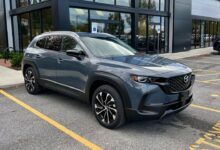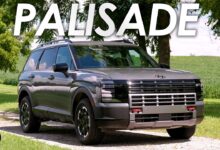A New Benchmark in Compact SUVs: The 2026 Volkswagen Tiguan Goes Premium
Volkswagen has long held a crucial position in the automotive landscape, particularly for buyers seeking German engineering, refinement, and handling without the luxury price tag. With the debut of the 2026 Volkswagen Tiguan, the brand is deliberately blurring the lines between mainstream and luxury, especially with the introduction of a new, high-output engine dubbed the “Turbo.”
While it’s true that all Tiguan engines are turbocharged—a point of playful discussion—this new top-tier powertrain represents a substantial shift. It’s an affirmation of Volkswagen’s core commitment to driving engagement, setting the 2026 Tiguan up to be not just a best-seller, but a compelling alternative to genuine luxury compact SUVs like the Audi Q5 or BMW X3.
This in-depth review explores the comprehensive updates to the Tiguan family, focusing on the exciting performance leap, the redesigned architecture, and the feature-rich interior that is redefining expectations in this fiercely competitive segment.
The Powertrain Revolution: Detailing the Tiguan Turbo Engine
The most talked-about development for the 2026 Tiguan is the availability of the new high-performance 2.0-liter turbocharged four-cylinder engine. This potent motor is exclusively offered on the top-level trims, underscoring its role as a premium offering designed for the enthusiast.
Turbo vs. Base: A Significant Power Differential
The 2026 Tiguan lineup features two distinct versions of the 2.0L turbocharged four-cylinder engine, both mated to an 8-speed automatic transmission:
- Base Engine (Standard):
- Horsepower: 201 hp
- Torque: 221 lb-ft (AWD), 207 lb-ft (FWD)
- Drivetrain: Standard all-wheel drive (AWD) in Canada, with front-wheel drive (FWD) and AWD options in the United States.
- Turbo Engine (Top Trim Exclusive):
- Horsepower: 268 hp
- Torque: 258 lb-ft
- Drivetrain: Standard all-wheel drive (AWD)
The Turbo engine provides a substantial 67 horsepower and 51 lb-ft of torque increase over the standard powerplant. This is not merely a slight bump; it transforms the vehicle’s driving character. This level of power is typically reserved for entry-level luxury SUVs or dedicated sport compacts, placing the Tiguan “Turbo” in a league of its own within the non-luxury segment.
A key advantage for budget-conscious performance seekers is that this powerful engine is designed to run on regular-grade fuel, eliminating the premium cost associated with many high-output engines. This detail enhances the Tiguan’s value proposition significantly.
Engineering Excellence: The Evo 5 DistiAgility

The Tiguan Turbo’s engine is part of Volkswagen’s new Evo 5 engine family, a key technical detail that speaks to its capability and refinement. The previous generation of Volkswagen’s larger engines, such as those found in the Atlas SUV, belong to the Evo 4 family. While the power figures of the Tiguan Turbo may resemble those of the Atlas, the Evo 5 designation confirms that this is the newest and most sophisticated evolution of the engine architecture.
Volkswagen confirms that the Tiguan Turbo engine features advanced technical components to handle the elevated output:
- Variable Geometry Turbocharger (VGT): This sophisticated component is the reason for the “Turbo” designation’s performance boost. A VGT allows the turbo to adjust its exhaust flow characteristics, optimizing boost pressure across the entire RPM range. This results in quicker throttle response at low speeds and sustained power delivery at high speeds—significantly reducing turbo lag and providing a smooth, immediate surge of acceleration.
- Strengthened Internals: The engine utilizes stronger pistons and connecting rods. These internal components are crucial for maintaining durability and reliability under the stress of increased boost pressure and higher horsepower. This is an engineering hallmark often found in true performance vehicles.
- Enhanced Cooling and Airflow: Optimized intake and intercooler systems ensure the engine runs efficiently, especially during high-demand driving, contributing to the consistent power output and respectable fuel economy figures.
The decision to outfit their best-selling nameplate with the newest and most potent technology demonstrates Volkswagen’s strategic prioritization of the Tiguan in their global portfolio. The expectation is that the Evo 5 engine will eventually propagate to other models, including the next-generation Atlas, a move that would align VW’s entire SUV lineup with their latest performance standards.
Competitive Positioning: Rivaling the Premium Segment
The 268 horsepower output of the Tiguan Turbo squarely positions it against entry-level premium compact SUVs. When compared to the performance figures of the Audi Q5 or BMW X3, the top-trim Tiguan offers a level of power that is often on par with or superior to their respective base engines, sometimes at a fraction of the cost.
Furthermore, Volkswagen maintains that while the Tiguan Evo 5 engine may share some basic components with Audi’s engines, it remains a fundamentally different, purpose-built motor. This differentiation allows VW to deliver premium-level performance while ensuring the Tiguan adheres to a non-luxury price point, further blurring the competitive landscape.
The Engaging Drive: Handling and Dynamics
Volkswagen has always prided itself on providing an “engaging drive”—a level of connection and fun that is often lost in the pursuit of fuel efficiency and practicality in the non-luxury CUV segment. The 2026 Tiguan capitalizes on this brand DNA, enhancing the driving experience through refinement, weight savings, and a superior transmission.
Weight Reduction and Enhanced AgScreen
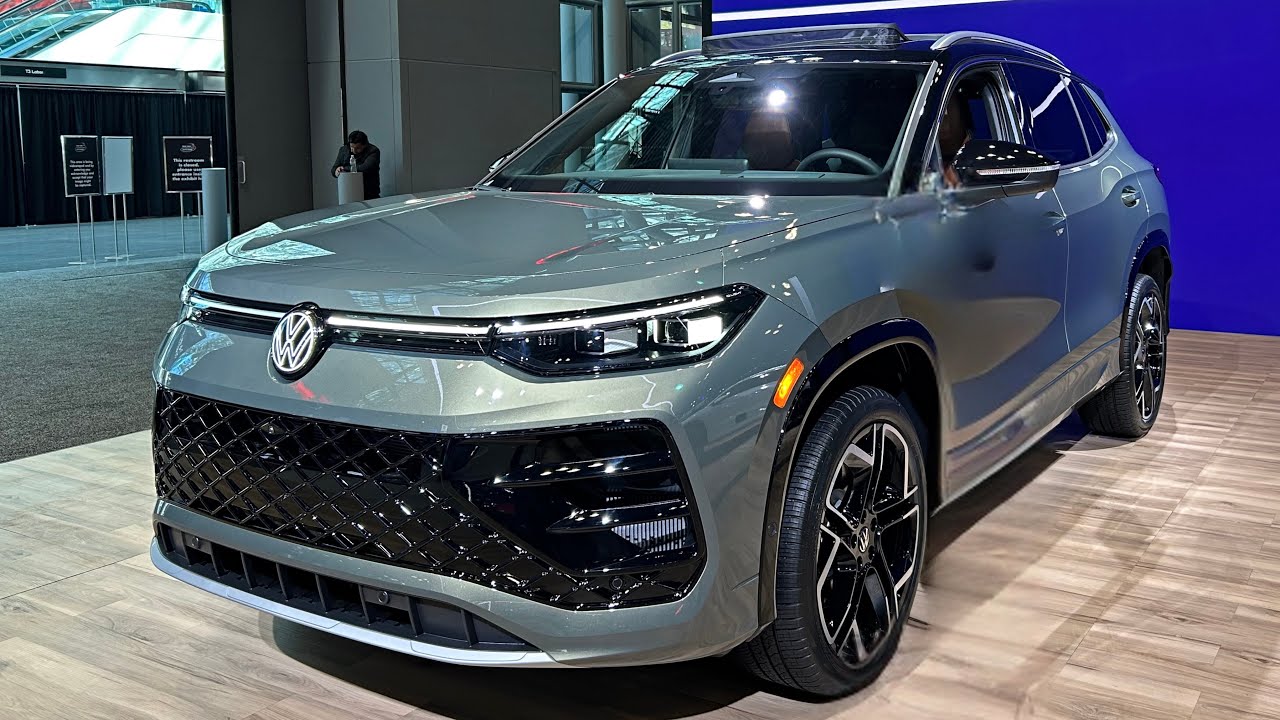
A key, often overlooked, engineering achievement in the new Tiguan is its reduced mass. The 2026 model is approximately 170 lbs (or 70 kg) lighter than its predecessor. This significant weight reduction pays dividends across the board:
- Improved Acceleration: The power-to-weight ratio is instantly improved, making the standard engine feel punchier and the Turbo engine feel genuinely fast.
- Sharper Handling: A lighter chassis translates directly to better agility, reduced body roll, and a more responsive feel when cornering. This is where the German engineering philosophy—where handling and stability are paramount—shines through.
- Better Fuel Economy: Less mass to move means less energy consumption, contributing positively to the overall efficiency figures, especially in city driving.
This weight savings, combined with the power boost across both engine options, means the Tiguan delivers on the promise of an energetic and refined driving experience that can handle quick acceleration, merging onto highways, and confident passing maneuvers.
Smoothness on the Open Road
The driving experience is heavily anchored by the excellent 8-speed automatic transmission. Unlike some competitors, particularly those using continuously variable transmissions (CVTs), or Volkswagen’s own use of dual-clutch transmissions (DSG) in previous performance models, the Tiguan utilizes a conventional torque converter automatic.
While enthusiasts often laud the speed of a DSG, many mainstream buyers prefer the predictable, buttery-smooth shifts of a torque converter, especially in stop-and-go traffic. The Tiguan’s 8-speed is tuned to be seamless—delivering smooth acceleration from a standstill, yet capable of quick, responsive downshifts when the driver demands power. This blend of comfort and immediate response is highly effective.
Furthermore, Volkswagen’s reputation for highway refinement holds true. At speed, the Tiguan offers exceptional cabin quietness and stable high-speed cruising dynamics. This ability to deliver a luxurious, composed experience on the interstate is a hallmark of German engineering and is a significant advantage for buyers who prioritize long-distance comfort and safety.
The Fun Factor: Addressing Customer Demand
Volkswagen emphasizes that customer research indicates a strong desire for an “engaging or fun drive,” with 76% of their compact SUV buyers looking for this quality. The 2026 Tiguan Turbo is the direct answer to this demand.
The combination of the strong power, the responsive transmission, and the lighter chassis geometry transforms the Tiguan from a practical utility vehicle into a genuinely enjoyable vehicle to drive. The top trim (Highline/SEL R-Line) further enhances this feel with standard paddle shifters behind the steering wheel and the choice of dynamic driving modes, allowing the driver to fully engage with the performance capabilities of the Evo 5 engine.
Redefining the Cabin: Luxury-Grade Interior and TechnProfile
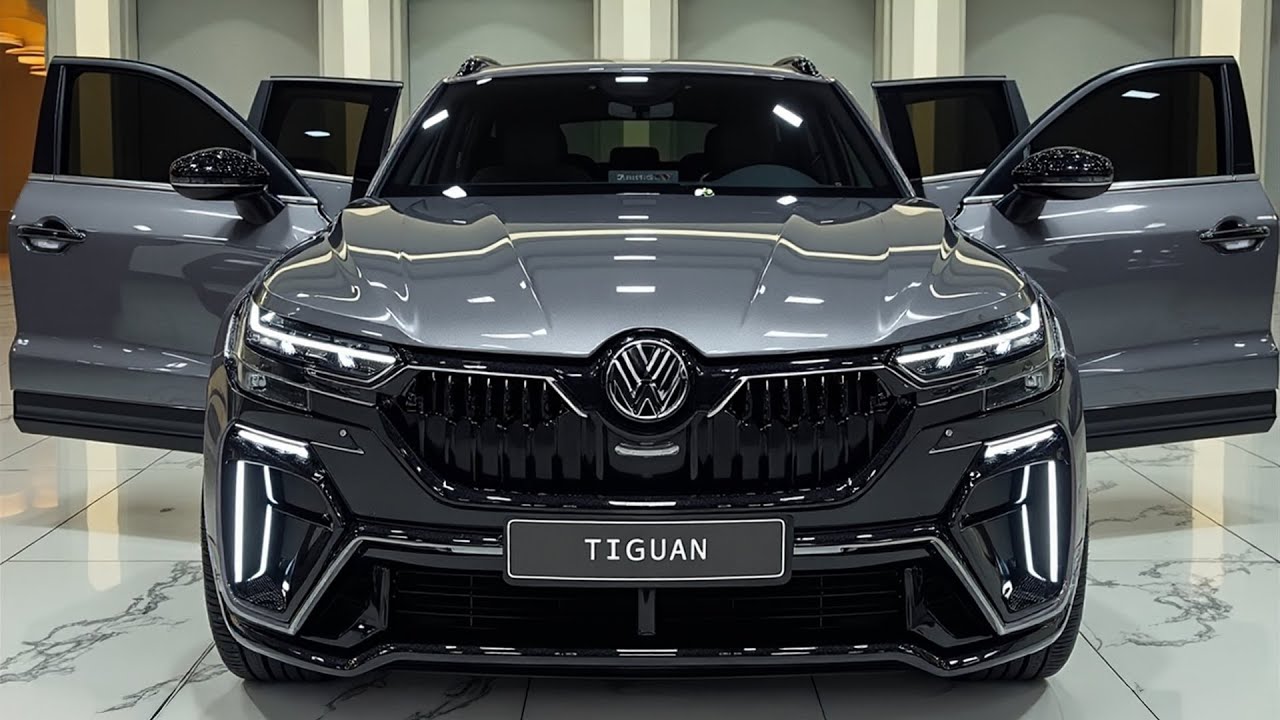
The most visible sign of the Tiguan’s luxury aspirations is its completely redesigned interior. Walking into the 2026 Tiguan, particularly the top-tier R-Line, is a moment of revelation, setting a new standard for material quality and technological integration in the non-luxury compact SUV class.
Premium Materials and Design Language
The new Tiguan interior successfully blurs the lines between mainstream and premium thanks to an impressive execution of material quality:
- Upholstery: The top trim features genuine leather with striking quilting and detailed stitching. The popular brown interior color option, which has been a sales success in the initial months of release, is particularly effective at conveying a luxurious and warm ambiance.
- Trim Finishes: While Volkswagen maintains some of the glossy piano black plastic that some reviewers find excessive, the cabin also incorporates more sophisticated elements. The use of real wood trim on the top-tier model, complemented by soft vinyl-wrapped dash pads and high-quality door card materials, enhances the upscale feel. The cream piping and contrasting color accents further elevate the visual appeal.
- Ergonomics and Comfort: The front seats are highly comfortable, offering excellent support, particularly for the thighs. Crucially, the R-Line model elevates the comfort game with features previously exclusive to luxury vehicles:
- Massage Seats: A notable addition, providing a surprisingly effective massage function.
- Ventilated Front Seats: Essential for hot climates.
- Power Passenger Seat: Including height adjustment, a welcome feature often omitted in this segment.
- Heated Rear Seats: Adding comfort for all passengers.
Technological Dominance: The 15-Inch Infotainment Screen
The centerpiece of the 2026 Tiguan’s cabin is the enormous, tablet-style infotainment display. While the standard base model receives a generous 12.9-inch touchscreen, the top-spec model boasts an impressive 15-inch screen.
This screen is more than just large; it’s an integrated control hub for virtually all vehicle functions, utilizing Volkswagen’s latest Modular Infotainment Matrix (MIB) architecture. The key technological highlights include:
- Speed and Responsiveness: The new system features a noticeably quicker processor and improved backend programming compared to previous VW infotainment generations (like the system in the 2024 GTI), resulting in a swift and lag-free user experience.
- Crisp Graphics: The display benefits from high-resolution graphics, ensuring all information, from navigation maps to camera feeds, is clear and legible.
- Integrated Controls: Climate controls, including heated and ventilated seats, are seamlessly managed via dedicated, easy-to-access tabs permanently displayed at the bottom of the screen. This design minimizes deep-diving through menus for essential functions.
- Standard Connectivity: Wireless Apple CarPlay and Android Auto come standard across all trims, complemented by a 15-watt wireless charging pad for fast device replenishment.
- Digital Driver Display: A standard 10.25-inch digital driver display provides customizable driving information directly in the driver’s line of sight.
Beyond the Screen: R-Line Amenities
The flagship trim is loaded with luxury-grade amenities that justify its position as the best-selling model in the Canadian market and the premium choice in the US:
- Head-Up Display (HUD): Projects critical driving information onto the windshield.
- 360-Degree Camera System: Provides a comprehensive view for parking and maneuvering.
- Driver’s Seat Memory: Storing personalized seating positions.
- Harman Kardon Sound System: A 12-speaker premium audio system delivering high-fidelity sound.
- Customizable Ambient Lighting: Allowing drivers to select colors to match their mood or style.
Evolved Design: A More Classic SUV Profile
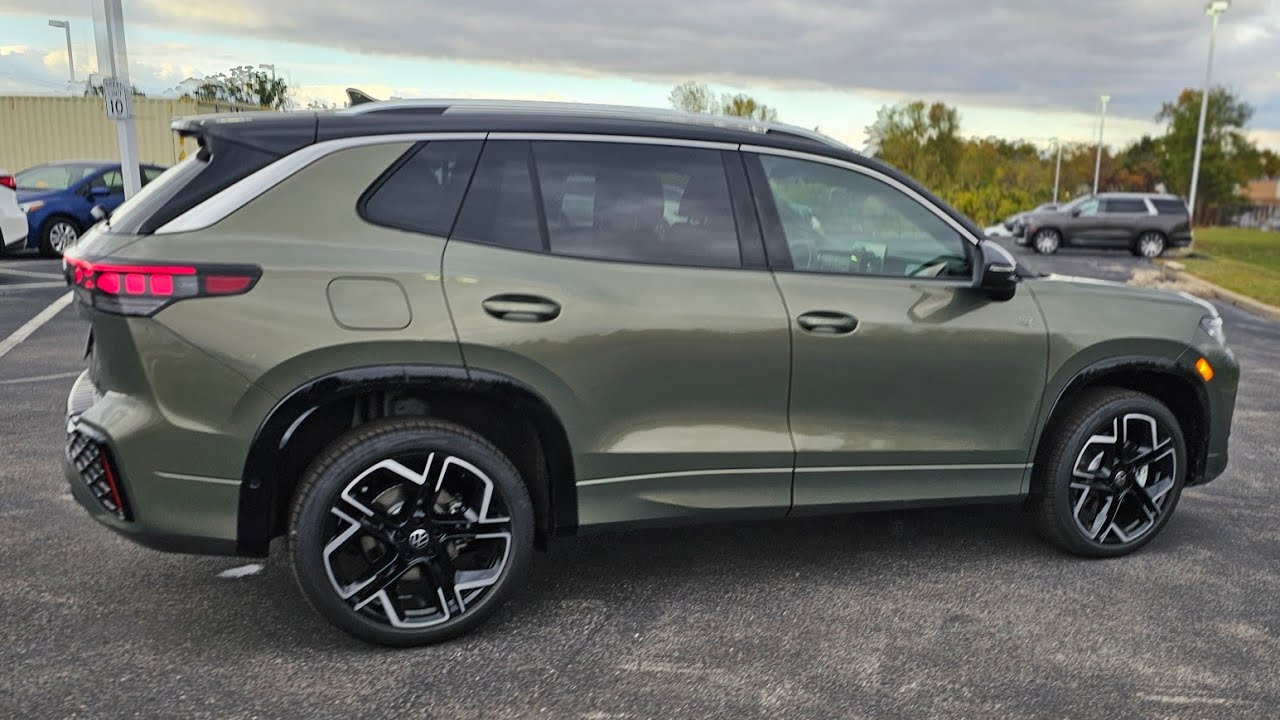
Volkswagen has directly addressed previous market feedback regarding the outgoing Tiguan’s exterior styling, which some described as having a “wagon vibe.” The 2026 model adopts a more assertive and traditionally SUV-like profile, aligning it better with the modern VW family aesthetic.
A Shift in Stance and Proportion
The new Tiguan is marginally shorter than the model it replaces, largely due to shorter front and rear overhangs. However, the design team achieved a significant internal packaging feat:
- Upright Stance: The vehicle now features a more upright, conventional SUV profile with a blunt front fascia and a more vertical greenhouse (the glass cabin area). This design language strongly echoes the appearance of the ID.4 electric SUV, effectively unifying VW’s internal combustion and electric lineups.
- Enhanced Presence: It is slightly wider than the previous generation, contributing to a more planted and aggressive road presence.
- R-Line Styling: The best-selling top trim receives the sporty R-Line exterior package, which includes darker exterior elements, a sporty black grille, and larger wheel options (up to 20 inches). This package perfectly encapsulates the German-sporty aesthetic that consumers demand.
Practicality and Dimensions
Despite the exterior re-sculpting, the Tiguan remains highly practical, excelling in both passenger and cargo space:
- Passenger Volume: The slight reduction in overall length has not compromised interior room. In fact, the redesigned cabin packaging provides excellent space, with both the front and second rows boasting an impressive 40.2 inches of legroom, making it a comfortable ride for four adults.
- Cargo Capacity: The cargo area is large and useful, offering competitive figures for the segment:
- Behind Second Row: 26.5 cubic feet
- Maximum (Seats Folded): 58.9 cubic feet
- Ground Clearance and Lighting: The Tiguan maintains a practical 7 inches of ground clearance, making it suitable for light off-roading and managing rough terrain. Standard exterior features include LED projector headlamps, LED tail lamps, and an integrated rear light bar.
Market Strategy, Pricing, and Fuel Efficiency
Volkswagen’s strategy for the 2026 Tiguan is clear: appeal directly to the “German car intender”—the buyer who values sophisticated engineering and premium features but is unwilling or unable to make the jump to a full luxury brand. The pricing and trim strategy fully supports this goal.
The Top Trim Phenomenon
A fascinating observation from the current market is that the highest trim level—the one featuring the new 268 HP Turbo engine—is the best-seller, particularly in the Canadian market (Highline R-Line) and consistently popular in the US (SEL R-Line Turbo).
This trend highlights that VW customers are actively seeking the fully loaded, performance-focused version of the vehicle. They are using the Tiguan as a form of accessible luxury, selecting a model that rivals the amenities and power of entry-level premium crossovers.
Pricing and Value Proposition (MSRP)
The price difference between the base model and the performance R-Line is strategically set to emphasize the value of the top trim:




